UK Nature and Environment
 www.theguardian.com
www.theguardian.com
It is the second-best place for nightingales in the country, a sanctuary for rare barbastelle bats and home to nearly 1,500 invertebrate species, including a quarter of all Britain’s spider species. But Middlewick Ranges on the edge of Colchester is poised to be sold by the Ministry of Defence for 1,000 new homes. Conservation scientists have written to the UK defence secretary, John Healey, urging him to reverse the decision to sell the 76-hectare (187.8-acre) site for housing. Experts who have fought the proposals for eight years say the house-building is based on faulty and flawed environmental evidence and must be reversed. A freedom of information request by campaigners has revealed an ecological report that in 2017 identified large swaths of rare acid grassland at Middlewick, which has been untouched by a plough for at least 200 years and contains more than 10% of Essex’s remaining acid grassland.
 www.theguardian.com
www.theguardian.com
The dramatic sea cliffs, crags and stacks of Rathlin Island, county Antrim, rise more than 200 metres above the Atlantic Ocean and host one of the UK’s largest seabird colonies, including hundreds of endangered puffins, attracting up to 20,000 birders and tourists a year. On a spectacularly sunny day in September, the cliff faces are devoid of birds, with the puffins already having made their annual migration to spend the winter months at sea. Instead, Rathlin’s cliffs are dotted with roped-up figures in harnesses and bulging rucksacks, directed from above by a Scottish mountaineer, via a walkie-talkie. They are part of a crack team of 40 scientists, researchers, conservationists and volunteers who this week will put the first poisoned food into the bait stations designed to kill the island’s rats. It is the final phase in a £4.5m project to eradicate the key predators believed to be affecting the island’s puffin colony. Ferrets were eradicated in the first phase and it has been a year since the last confirmed sighting. Puffin numbers declined here by 74% between 1991 and 2021, according to an EU study.
 www.bbc.co.uk
www.bbc.co.uk
A species of ant has been found for the first time on the Isle of Man by a volunteer with a conservation group. Manx Wildlife Trust (MWT) member Sue Harvey came across the insect, which is a known species elsewhere in the British Isles, at a disused quarry in the south of the island. Local conservationists said the finding “shows how former industrial sites can become thriving wildlife habitats when cared for properly”.
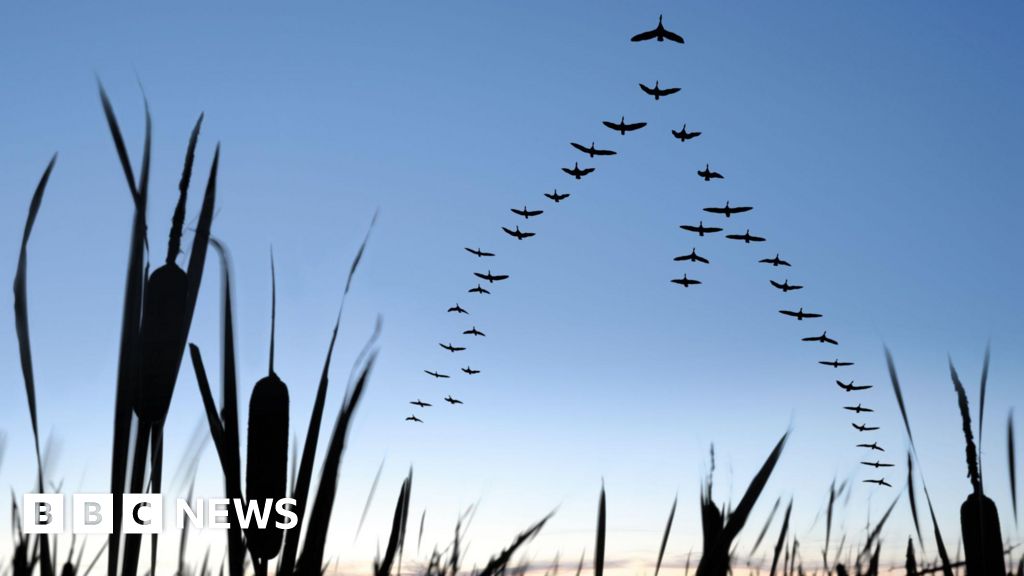 www.bbc.co.uk
www.bbc.co.uk
A unique combination of factors makes an area of the Humber Estuary "like a motorway service station" for migrating birds, wildlife experts have said. The waterways and beaches around Grimsby and Cleethorpes see thousands of birds arrive each autumn as they make their way to Africa from the Artic. Parts of the Humber Estuary were designated as a Site of Special Scientific Interest in 1988 and are protected by law. Abi Sheridan, ecology officer at North East Lincolnshire Council, said: "We’ve got mud flats and the salt marshes, lots of food resources, we’ve got lots of places for them to rest and recuperate on their journey."
 www.bornfree.org.uk
www.bornfree.org.uk
The Labour government has published details of badger culling licenses that could result in the targeting of almost 40,000 additional badgers in 2024. These culls, across the High-Risk bovine TB area in England, will be in addition to the 230,000 that have been killed since licensed culling was introduced in 2013. The licenses cover 20 ‘intensive cull zones’, which are on their third or fourth year of intensive culling, plus 26 ‘supplementary licenses’ extending the culls in zones which have completed four years of intensive culling. Badger populations in some of these latter zones are now being targeted for the ninth consecutive year, while other zones have been issued supplementary licenses for the first time. The government has also published licenses for two new cull zones in the Low-Risk TB area in England, one in Lincolnshire and one in Cumbria, but has not released figures detailing how many badgers can be targeted.
 www.nationaltrust.org.uk
www.nationaltrust.org.uk
A year on from the completion of a three-year project on the National Trust’s Holnicote Estate in Somerset to reconnect a section of a river to its floodplain – the innovative ‘Stage 0’ river restoration technique, first pioneered in Oregon, USA – has been heralded a success. The ‘ctrl alt delete’ of the river was the first large-scale attempt to reset a UK river to fully reconnect its waters with the surrounding floodplain by filling in a 1.2km managed, straightened and deepened section of the River Aller to transform the area and dramatically create seven hectares of waterscapes and wetlands (equivalent to more than ten football pitches). A priority habitat for nature, wetlands are extremely important to not only slow the flow of water and to hold it during times of drought, but they are also significant for their ability to store carbon and act as homes for wildlife. However, sadly over 90 per cent[3] of wetland habitat in the UK has been lost in the last 100 years, and over 10 per cent of our freshwater and wetland species are threatened with extinction.
This week, Feargal Sharkey, the former Undertones frontman and influential environmental campaigner, travelled to Swinton in South Yorkshire to test the River Don, a 70-mile stretch of water running through cities such as Sheffield, Rotherham and Doncaster, which became a pillar for transporting goods such as steel during the Industrial Revolution. There, he tested for a litany of bugs and pollutants, once again placing the Environment Agency and the regional water company, Yorkshire Water, under the microscope. And the findings make for truly grim reading. The most concerning result Mr Sharkey uncovered was when testing for phosphates in the river. If a river contains elevated levels of phosphates, it can result in the development of blue-green algae, a highly toxic constellation of microscopic organisms, which can cause illness in humans and be fatal for wildlife.
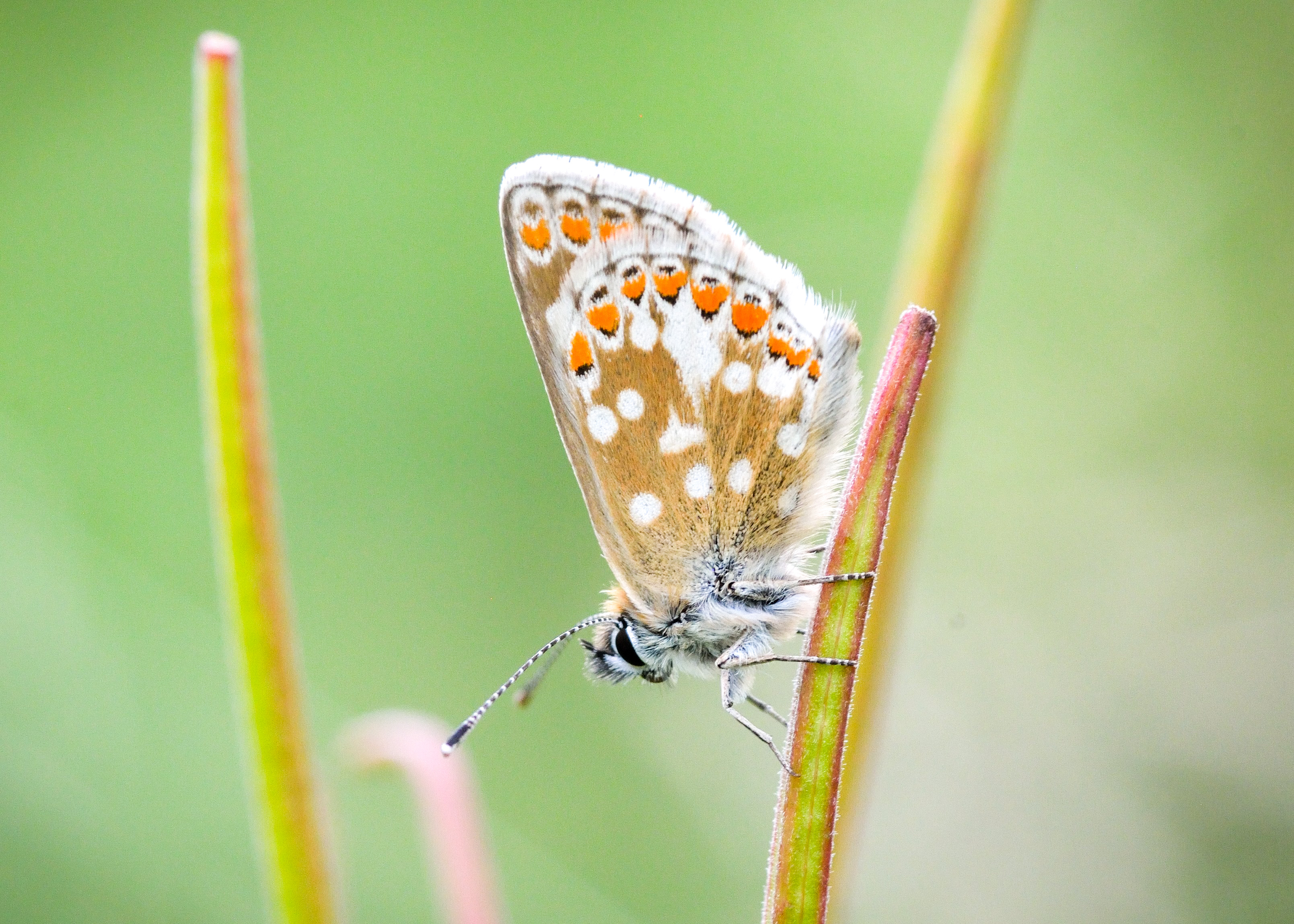 butterfly-conservation.org
butterfly-conservation.org
Butterfly Conservation has been awarded £727,000 for a project to help farmers improve their land for wildlife and make their business more financially viable at the same time. The Scotland team will trial a host of experimental techniques at farms in the south of Scotland over the next six years. The funding has been given as part of the Borderlands Inclusive Growth Deal - an agreement between English and Scottish governments to invest £452 million to boost the economy around the border.
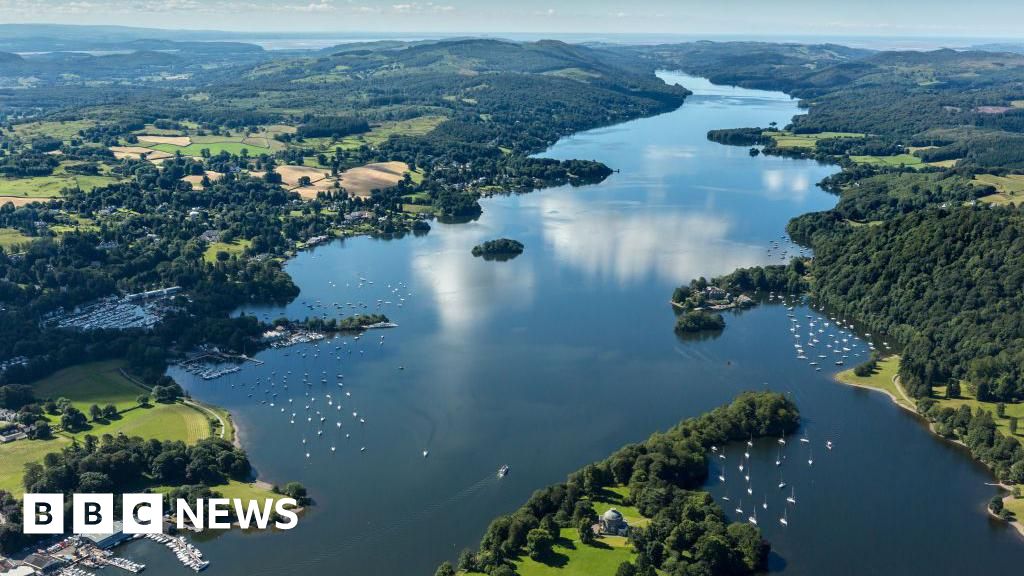 www.bbc.co.uk
www.bbc.co.uk
A water company repeatedly dumped millions of litres of raw sewage illegally into one of England's most famous lakes over a three-year period, the BBC can reveal. More than 140 million litres of waste were pumped into Windermere between 2021 and 2023 at times when it was not permitted, our analysis shows, and United Utilities failed to report most of it. It means the company's illegal dumping of sewage into the lake went on for far longer, and was far more extensive, than was previously known.
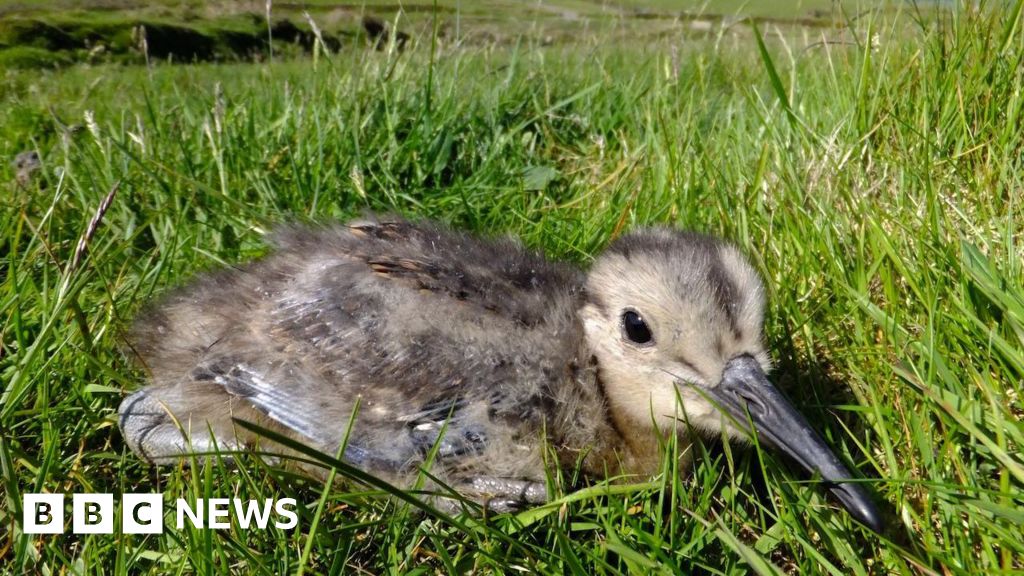 www.bbc.co.uk
www.bbc.co.uk
Wildlife conservationists and campaigners on the Isle of Man have joined together to form a new lobby group in a bid to create a "stronger voice for Manx nature". The Manx Nature Alliance comprises local wildlife charities and organisations as well as a number of independent professional ecologists. The group said its goal was the conservation and restoration of the island's wildlife and habitats and ensuring the topic remains high on the island's agenda.
 www.theguardian.com
www.theguardian.com
It is considered one of the most majestic waterfalls in north Wales, a mist-shrouded torrent that has inspired storytellers and artists for centuries. But a fierce row has broken out over a scheme to harness the force of Rhaeadr y Cwm to generate electricity, with one of Wales’s foremost naturalists, Iolo Williams, the latest to step into a growing row over the project. Williams, also a popular broadcaster, has added his voice to 1,000 protesters who have expressed fears that if the scheme goes ahead it will damage one of the most wonderful sights in Eryri (Snowdonia) and harm an important habitat for precious ferns and mosses.
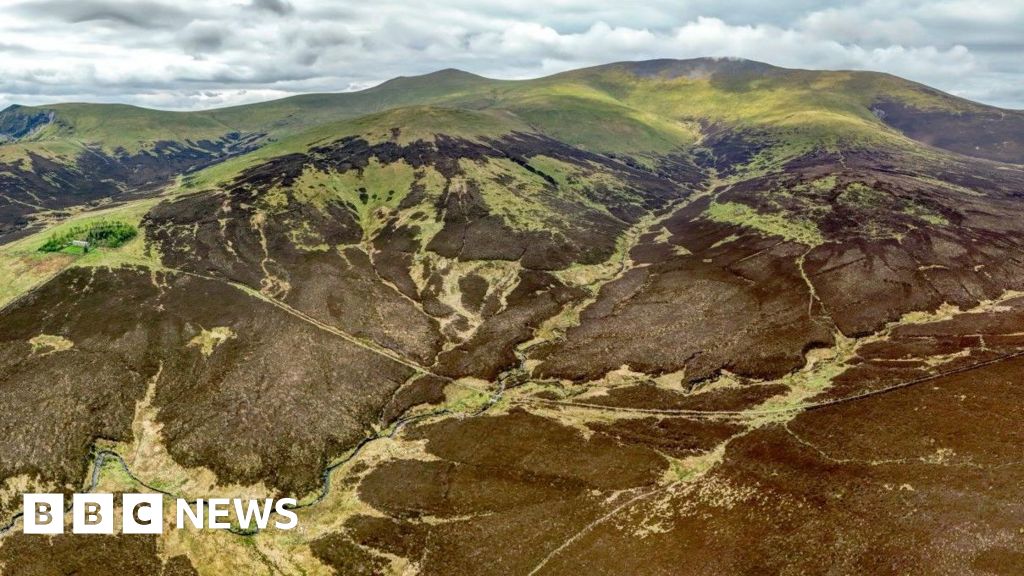 www.bbc.co.uk
www.bbc.co.uk
A wildlife trust has hit its fundraising target to secure a mountain and its slopes to create England's highest nature reserve. Cumbria Wildlife Trust said it was "overwhelmed" to have received £1.25m in public donations on top of £5m in funding to buy more than 3,000 acres of Skiddaw Forest, including its summit at 931m (3,054 ft). It is part of a scheme to restore what is known as Atlantic Rainforest, a mixture of native woodland and peat-rich soils which trap carbon.
New woodland is growing once more in the historic Royal Forest of Knaresborough, thanks to the support of local community groups in the Harrogate area. Spanning 45 square miles, the equivalent of approximately 18,000 football pitches, the Royal Forest of Knaresborough was a popular royal retreat in the 12th Century. This diverse landscape, stretching from Thrushcross Reservoir to the west, to Knaresborough, enjoyed a special protected status as a royal hunting ground, allowing a rich mosaic of habitats and wildlife to thrive. Today only fragments of the original landscape remain, including pockets of important ancient woodland. Local community groups are now leading the way in protecting and expanding the woodland and biodiversity in the Royal Forest of Knaresborough area, with support from White Rose Forest, the Community Forest for North and West Yorkshire. The White Rose Forest team works with landowners, local government, businesses and communities across North and West Yorkshire to plan, fund and plant trees and hedgerows. Thanks to collaborative efforts between the White Rose Forest team and local community groups, such as Long Lands Common and the Friends of Nidd Gorge Country Park, several projects are now underway to protect and expand new and existing woodland.
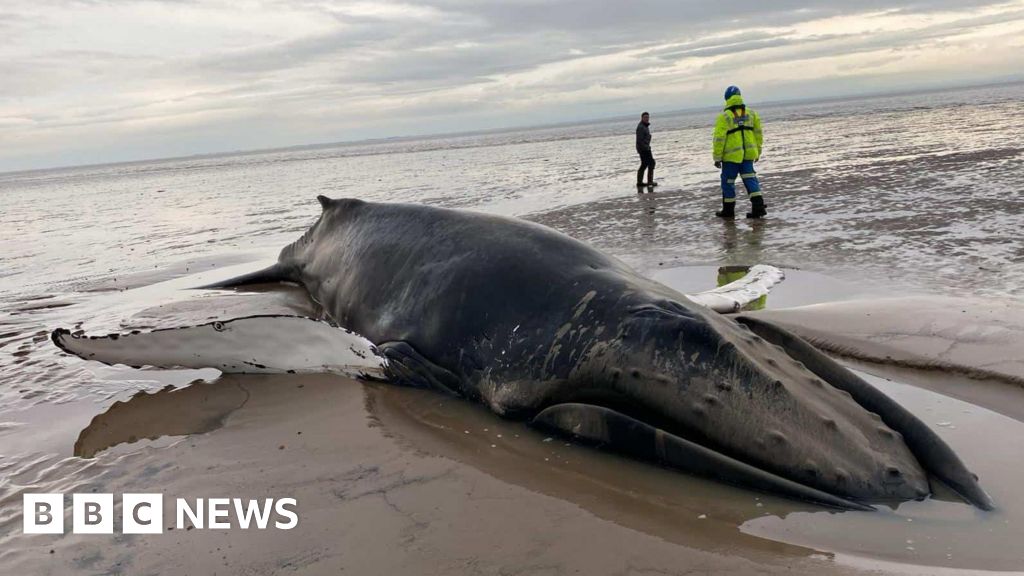 www.bbc.co.uk
www.bbc.co.uk
Rescuers say they are hopeful a humpback whale found stranded on the south of Scotland coastline will make a full recovery after it was refloated. British Divers Marine Life Rescue (BDMLR) was alerted to the situation at Southerness at about 15:30 on Tuesday. It said the 9m (30ft) long whal was lucky that it did not have to wait long for the returning tide to wash over the area to refloat it. Checks the following day found no sign of the whale and medics will monitor the coastline over the coming days to ensure it has not got stranded again.
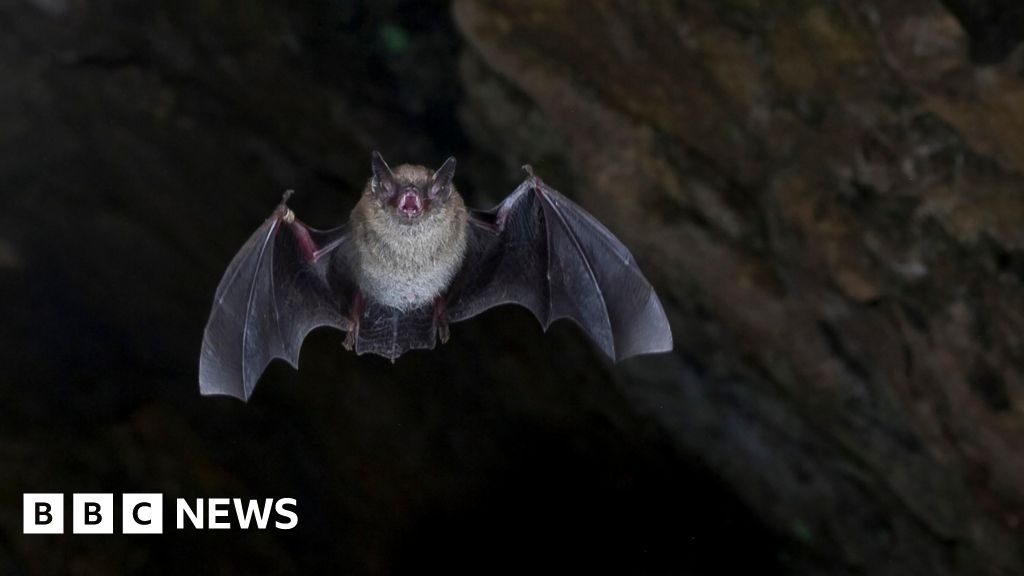 www.bbc.co.uk
www.bbc.co.uk
Bats have turned a collection of abandoned coal mines into a prime mating spot, experts say. Conservationists found eight species of bat using the mineshafts and surrounding moorland near Barnsley as an "autumn swarming" location. Following a year-long study, the 28-hecatare site, which sits above a Yorkshire Water reservoir, has been granted Local Wildlife Status by Barnsley Council.
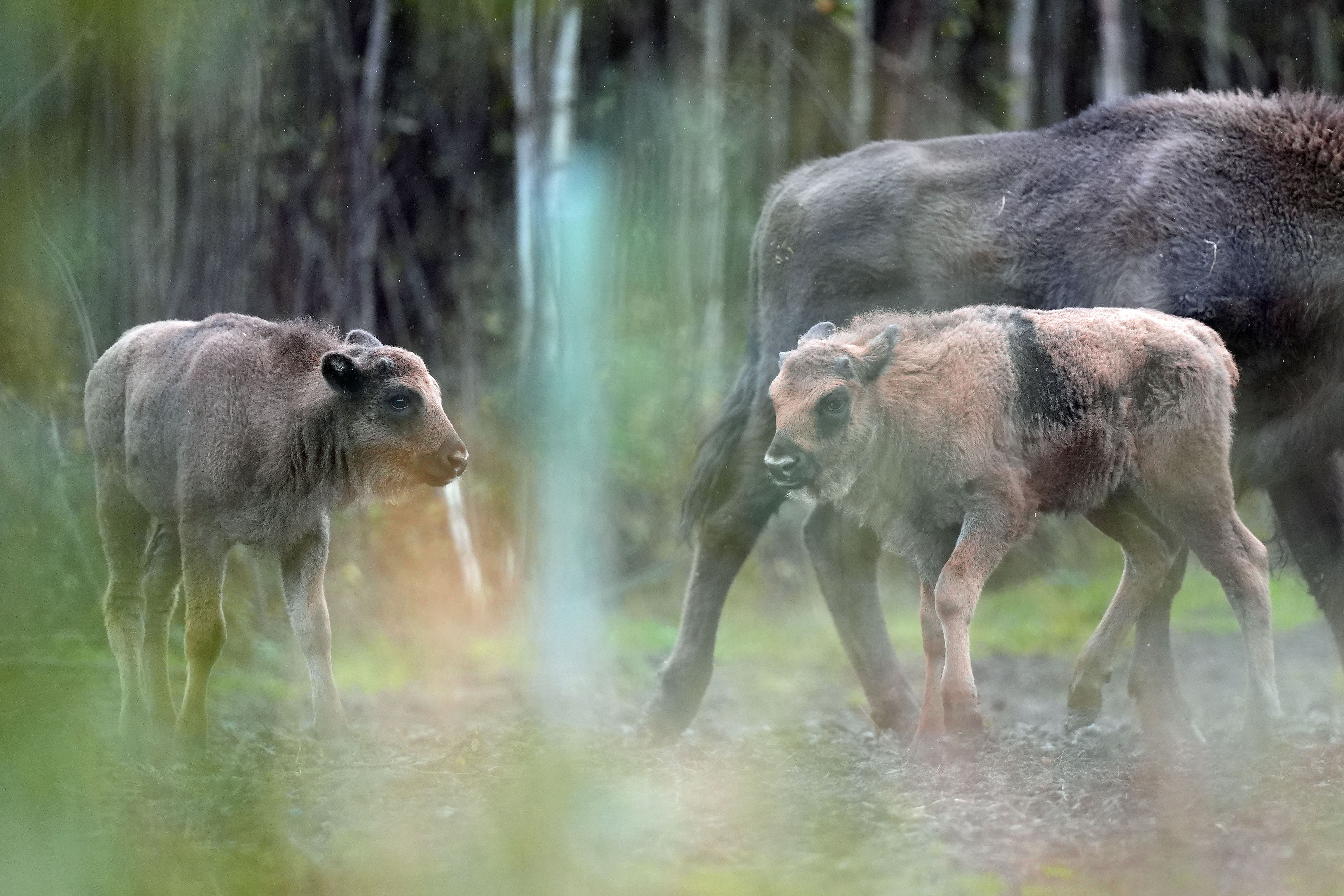 www.independent.co.uk
www.independent.co.uk
Bison introduced to an ancient British woodland to help tackle the nature and climate crises have welcomed two new calves to their herd, conservationists said. The two female calves have been born at Blean Woods, Canterbury, where a small herd of three females and a bull were introduced into a fenced enclosure in 2022 to naturally manage the woodland habitat. Kent Wildlife Trust and Wildwood Trust, who run the project, said the latest arrivals were born four days apart to the two younger females who arrived in 2022, and bring the wild bison herd population to eight.
Everyone should be able to feel immersed in wild nature and spend time in beautiful landscapes as a child. But far from everyone gets this opportunity. That’s why England’s National Parks are are proud to be playing a leading role in a project which is helping more than 25,000 young people living in the country’s most socially disadvantaged areas connect with nature and rural life. By the end of the project next spring, Generation Green 2 will have delivered more than 41,500 experiences focused on nature connection and outdoor learning to young people who would otherwise be the least likely demographic in the country to spend time in the nation’s most beautiful landscapes.
 www.fwi.co.uk
www.fwi.co.uk
It will come as little surprise to many to learn that a long-running study into insect populations in cereal crops – the Sussex Study – has shown a decline, linked to the intensification of agriculture over many decades. What is startling, however, is the extent of that loss. A recent assessment of the study, which dates back to 1968, by the Game & Wildlife Conservation Trust (GWCT), shows that insect abundance had declined by 37% in the 50 years up to 2019. Numbers of ground beetles and ladybirds have fallen by 80% and 78% respectively, both classed as beneficial predators, while a 90% reduction was recorded in numbers of aphids, a food source for invertebrates.
 www.wildlifetrusts.org
www.wildlifetrusts.org
Ahead of the 2024 General Election, The Wildlife Trusts laid out five critical priorities for an incoming government. These five asks are nature’s challenge to government to meet the true scale of the climate and nature crises. But what did Labour promise to do for nature and, 100 days in, how have they been doing so far? In June 2024 Environment Secretary Steve Reed unveiled Labour’s pre-election manifesto pledge called the ‘Countryside Protection Plan’ aimed at preserving Britain’s natural beauty and reversing environmental degradation. The plan includes: * Creating nine new National River Walks, * Planting three National Forests, * Ensuring new housing developments incorporate green spaces. * A new Community ‘Right to Buy’ for green spaces * Accelerating tree planting with a dedicated taskforce * Banning harmful pesticides to protect vital pollinators. Labour’s environmental manifesto promises extend to promote regenerative farming, establishing a land-use framework for food security and nature recovery, and enhancing nature-rich habitats like wetlands and peat bogs. They also plan to set up a Flood Resilience Taskforce to build flood defenses and plant trees to mitigate storm damage.
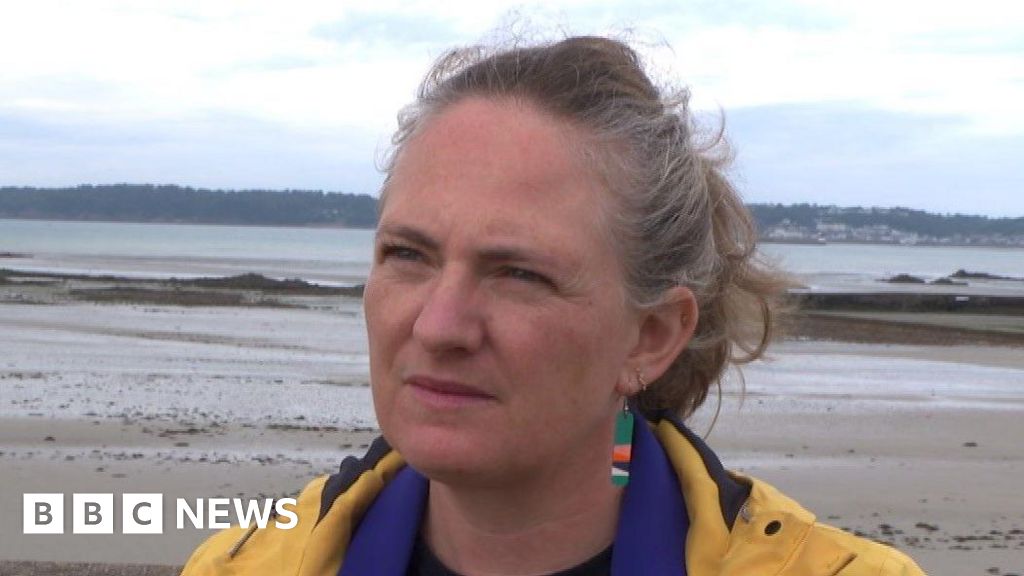 www.bbc.co.uk
www.bbc.co.uk
A scrutiny panel has said the environment minister needs to make two "key amendments" to a plan to protect Jersey's marine environment amid concern it could destroy important habitats. The Environment Minister Deputy Steve Luce published a revised version of the Marine Spatial Plan, external (MSP) in July that reduced the amount of protected marine area from 27% to 23% of island waters. He said he was trying to balance the needs of "the fishing fleet and the environmentalists".
 www.independent.co.uk
www.independent.co.uk
The levels of long-lasting toxins known as “forever chemicals” rose in a highly protected marine area after sewage discharges, researchers found. The University of Portsmouth teamed up with the Marine Conservation Society (MSC) to test for PFA chemicals in Langstone Harbour, Hampshire, which is home to harbour seals and a diverse range of birds. Called “forever chemicals” because they can take centuries to break down in the environment, PFAs can accumulate in the bodies of living organisms and have been linked to severe health conditions.
 www.bbc.co.uk
www.bbc.co.uk
A Liverpool based project that brings nature and development scooped three prizes at an international climate change award ceremony. The city council's Urban GreenUP project aims to rewild built up areas, improving air and water quality in the process. So far, it has seen the creation of urban raingardens, green walls and pollinator posts around the city centre, as well as a number of floating islands in the city’s docks and parks.
 www.theguardian.com
www.theguardian.com
The number of sites identified as potentially having been polluted with banned cancer-causing “forever chemicals” in England is on the rise, and the Environment Agency (EA) says it does not have the budget to deal with them. A former RAF airfield in Cambridgeshire and a fire service college in the Cotswolds have joined a chemicals plant in Lancashire and a fire protection equipment supplier in North Yorkshire on the agency’s list of “problem sites” for per- and polyfluoroalkyl substances (PFAS). In total, according to a report compiled for the agency, there could be more than 10,000 locations in England contaminated with PFAS – substances that have been linked to a wide range of diseases including cancers, and which do not break down in the environment, earning them the nickname “forever chemicals”. But to date the agency is only taking action on four sites.
 www.theguardian.com
www.theguardian.com
The collapse in the number of wild salmon in England and Wales is deeply dismaying. These fish are widely regarded as wonders of the natural world because of their extraordinary life cycle. This takes them thousands of miles out into the North Atlantic Ocean, before they return to our rivers – swimming and leaping upstream – to spawn. Climate change and failures of marine conservation have contributed to the decline in numbers across their entire range, which extends from Russia to Portugal. But in Britain, the poor state of rivers is another obstacle to the species’ survival. As well as a warning of the global threat to biodiversity, their dwindling numbers are a reminder of the price paid for the repeated breaking of environmental law. Until 2017 at least 20,000 salmon were recorded every year in more than 40 rivers including the Tyne, Wear and Eden. From 6,952 in 2022, the total fell to an estimated 5,399 last year (anglers, who log each fish they catch, return them to the water afterwards). Other popular species have also experienced precipitous declines over this period. This summer’s butterfly numbers were the lowest recorded since the annual Big Butterfly Count began, while swallows have declined by about a quarter. In each case, a combination of agricultural methods and climate change is to blame. But the threat to salmon is important for what it reveals about the failed stewardship of rivers, and the way in which regulations designed to protect vital habitats are flouted as a matter of course.
A wildlife enthusiast on TikTok has discovered a "super rare" animal "that shouldn't be in the UK" hiding up in Scotland. The Kookaburra is a type of bird native to Australia. It is part of the kingfisher family and is well-known for its distinctive call. While usually found in Australia there are also a handful located right here in the UK.
A MONITORING tower has been installed to measure the amount of carbon locked in a new Poole Harbour saltmarsh. The Environment Agency’s (EA) new structure at Arne Moor is a flux tower and joins a growing network of towers in saltmarshes across England. Flux towers provide a measure of how much carbon dioxide has been taken up by a saltmarsh and how it changes over time. This tower will be the first to monitor what happens to carbon within a habitat as it changes from dry land to a salty wet intertidal habitat when the existing flood embankment is breached as part of the Moors at Arne project.
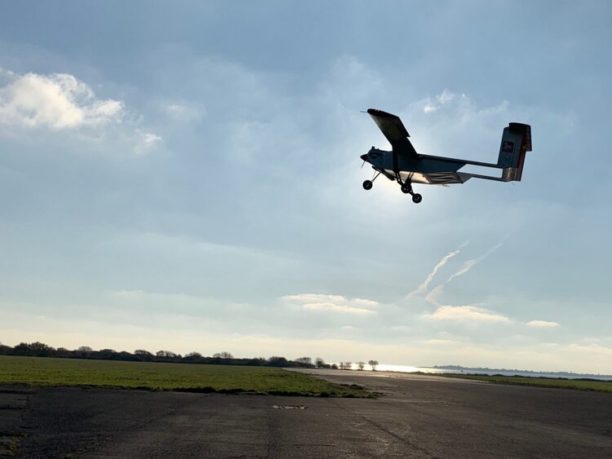 dronelife.com
dronelife.com
A new study by ornithologist Dr. Roy Armstrong and ecologist Caitlin Henderson has found no evidence of disturbance among seabird colonies in Orkney as a result of recent drone flights conducted by Windracers. This discovery is important for drone operators planning to serve Scotland’s remote island communities, where many sensitive bird species are located. The seabird colony disturbance study was commissioned as part of Windracers’ drone delivery trial in Orkney. The trial featured the Windracers ULTRA, a twin-engine, fixed-wing aircraft with a 10-meter wingspan, flying autonomously between the islands of Eday, Westray, and North Ronaldsay several times each week.
The National Trust has expressed concern over the future of its gardens, parks, and woodlands. Rangers and gardeners are poised for potential damage from further storms as the UK faces increasingly extreme weather conditions. Luke Barley, the National Trust's senior national consultant for trees and woodland, said: "In our management of both woods and ancient trees, we are worried about the impact of experiencing more storms when the trees are in leaf and catch the wind more, potentially causing more damage than these important habitats and trees can sustain.
 www.bbc.co.uk
www.bbc.co.uk
Nature in Northern Ireland is under "unsustainable" pressure and action is needed "urgently and decisively" to protect and restore the environment, a watchdog has said. The Office for Environmental Protection (OEP) has published a review of the drivers and pressures affecting biodiversity in Northern Ireland., external The principal pressures it identifies are land use change and pollution, closely linked to agricultural intensification.
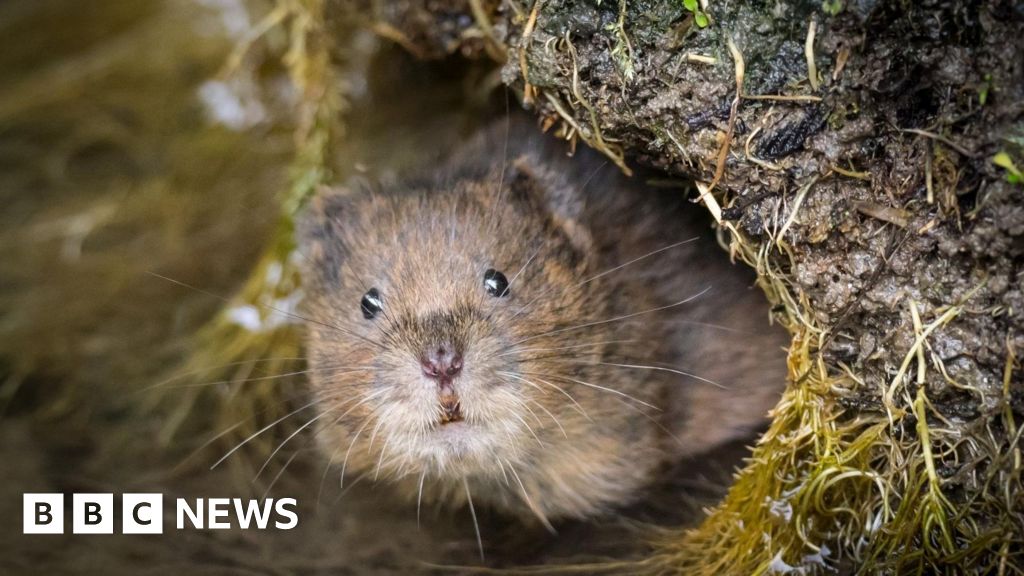 www.bbc.co.uk
www.bbc.co.uk
A nature reserve has been cleared through to entice back its lost water voles. The Hook in Lady Bay, Nottinghamshire, has undergone a desilting project to clear more than 600 sq m (6,500 sq ft) of its waterways and banks. In addition, large amounts of vegetation, including reeds in the river and brambles from the banks, have been removed.
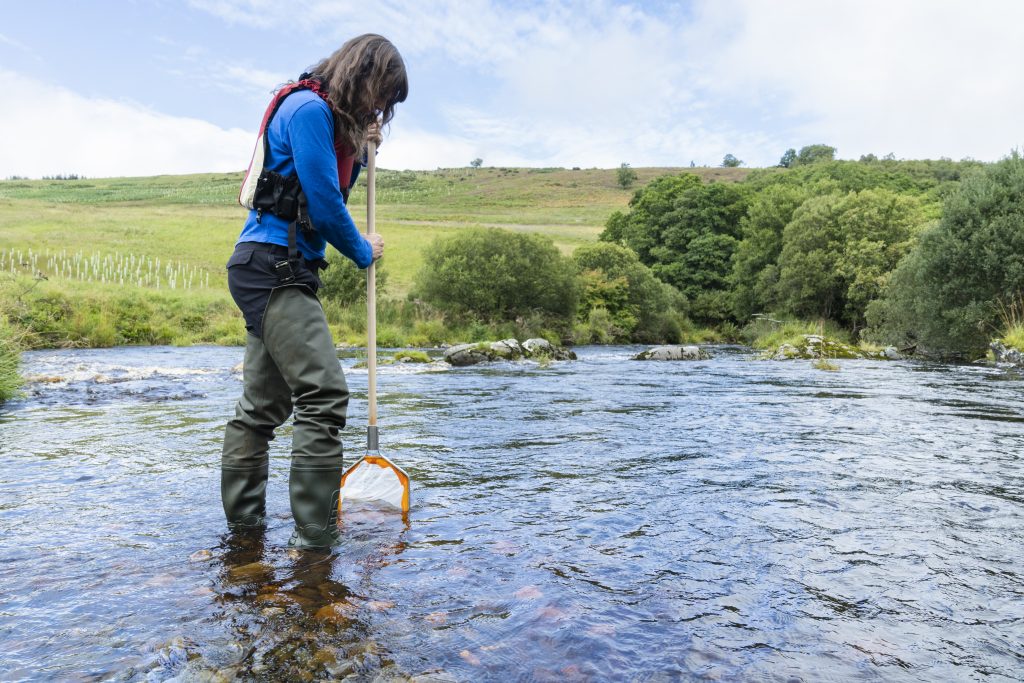 www.buglife.org.uk
www.buglife.org.uk
An ambitious new conservation project that will create and restore river woodlands across Scotland is now underway, thanks to funding from The National Lottery Heritage Fund. The Riverwoods Blueprint Project is being led by the Scottish Wildlife Trust, alongside partners Fisheries Management Scotland, Woodland Trust Scotland, Tweed Forum, Kyle of Sutherland Rivers Trust and Spey Catchment Initiative and Buglife. There are over 125,000km of rivers and streams in Scotland, however a recent survey showed that only 13% of riverside habitats are in good condition. This has led to a decline in important freshwater wildlife such as Atlantic salmon, brown trout, and the critically endangered freshwater pearl mussel.
 www.standard.co.uk
www.standard.co.uk
Wildlife charities have launched the first national hedgehog conservation strategy to halt the species’ decline across the UK. The People’s Trust for Endangered Species (PTES) and the British Hedgehog Preservation Society (BHPS) published the plan on Monday in response to plummeting numbers in native hedgehogs. It came after their 2022 report found that populations have declined by up to 75% in rural areas since 2000.
 www.bbc.co.uk
www.bbc.co.uk
York’s first “floating ecosystem” has been launched on the River Ouse to create a thriving habitat for wildlife and help improve water quality. The project to install the pontoon-like structure has been led by charities St Nicks and York Cares Jonathan Dent from St Nicks said: “This is an amazing project to inject some life back into the water in the city centre of York where there pretty much is none.”
A native pine marten has been captured on camera at the Longleat Estate in Wiltshire. Pine martens became extinct in the South West more than 100 years ago due to habitat loss as well as hunting and trapping. However, they have recently returned to the wild in the West Country, with 15 pine martens released at secret locations on Dartmoor in a project led by charity Devon Wildlife Trust.
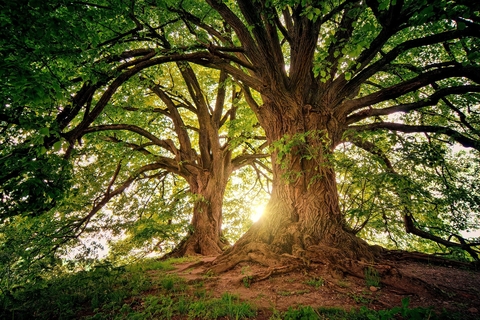 www.wildlifetrusts.org
www.wildlifetrusts.org
The Wildlife Trusts launch a report which outlines the steps UK Government must take to reverse nature loss and meet global targets. Next week the new UK Government comes under scrutiny on the international stage when it demonstrates how it intends to meet global commitments to reverse nature loss back home. UK progress is non-existent – actually regressing since global targets were set two years ago – and this will be a challenge for new ministers at this first stock-take. The occasion is the sixteenth meeting of the Conference of the Parties (COP 16) to the Convention on Biological Diversity which runs from Monday 21st October to Friday 1st November 2024 in Colombia. The upcoming summit will be the first opportunity for the world to measure progress towards the global nature goals agreed in December 2022.
A new island designed to attract breeding terns and gulls has been created at Saltholme RSPB. Chris Francis, site manager at the Durham reserve, said staff had "missed the chaos and noise" of the colonies after they were hit by bird flu last year. He said: "The new islands will help these birds recover their numbers again and, by spreading them out across different breeding sites, reduce the risk of losing birds to avian influenza and other threats in the future.
 www.cambridgeindependent.co.uk
www.cambridgeindependent.co.uk
Cattle had to be rescued from a Cambridgeshire nature reserve after torrential rain saw floods of up to three metres in depth. The land at RSPB Ouse Washes, near Manea, is used during the summer months as grazing land for cattle, which perform an important job of keeping grass and vegetation down. But after days of rain storms, RSPB staff had to move quickly to ensure the cattle were safely removed from the land before they became trapped by the floods. “The last few cattle were up to their waists in water when we managed to get them off the land,” explained Jonathan Taylor, site manager at RSPB Ouse Washes.
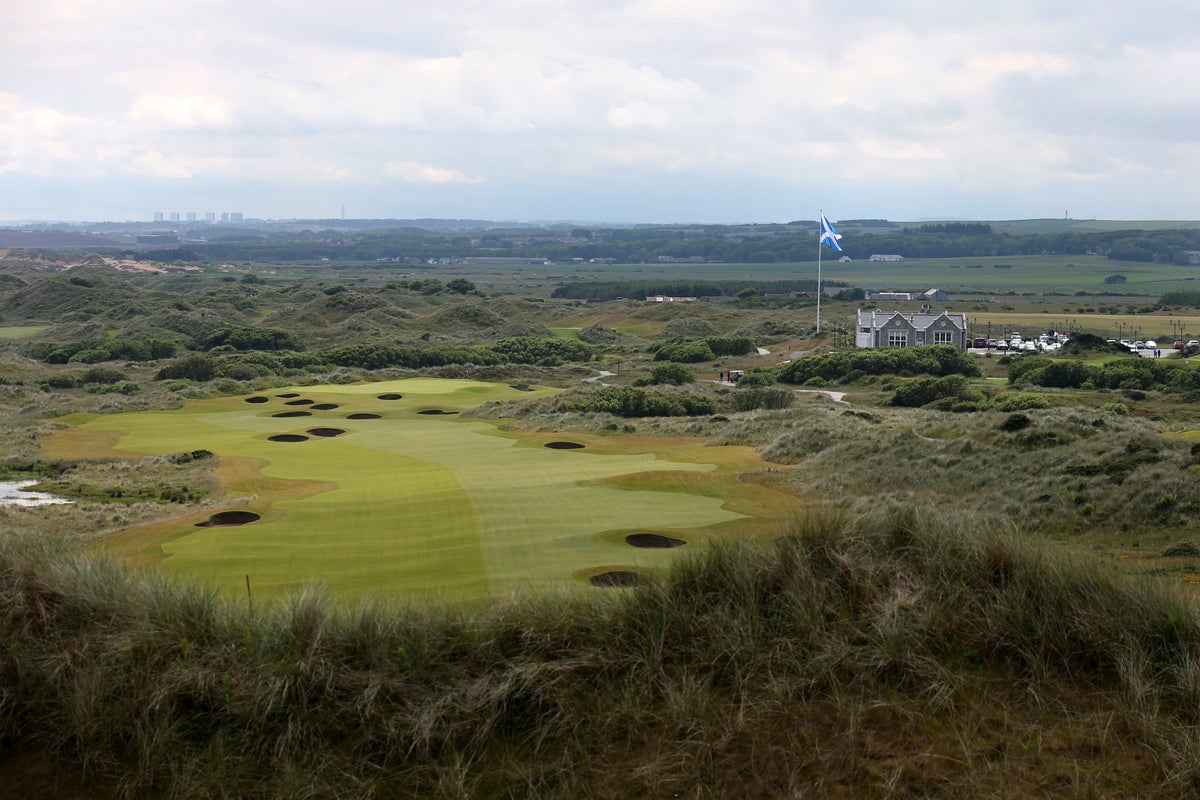 www.standard.co.uk
www.standard.co.uk
Campaigners have described as “laughable” the environmental credentials of Donald Trump’s new links golf course, which is set to open in Aberdeenshire in 2025. Trump International has billed the new 18-hole championship links near Balmedie as “one of the most environmentally-friendly and sustainable courses ever built”. The company said “virtually all the materials” used in the construction of the new course – named MacLeod after Mr Trump’s Lewis-born mother – were locally sourced and that it had a sustainable irrigation system.
A beetle is being used to tackle an invasive plant species in a Pembrokeshire nature reserve. The Azolla weevil, a herbivorous beetle, was released in June 2024 by the Four Rivers for LIFE Project onto Natural Resources Wales’ (NRW) Llangloffan Fen National Nature Reserve (NNR) near Fishguard. The beetle is being used to help control and eradicate the Azolla plant, which is dominating parts of the reserve and the nearby Cleddau River.
 www.theguardian.com
www.theguardian.com
Colwall, a village of less than 3,000 people on the border between Herefordshire and Worcestershire, is renowned for its spring water, which comes from the nearby Malvern Hills. An area of outstanding natural beauty, it has been favoured by the royal family for centuries, including Elizabeth I and Queen Victoria. But the water at Colwall is now in the spotlight for very different reasons. The most recent data from Severn Trent Water, the company that covers the area, reveals that a sewage treatment works on Cradley Brook, near the village, spilled sewage for 1,756 hours in 2021 and 1,361 hours in 2022. An analysis by the campaign group Windrush Against Sewage Pollution suggests some of these spills may be in breach of the water firm’s environmental permits. Its analysis suggests there were 72 unlawful spills in 2021 and 2022. Severn Trent said this weekend the “desktop” analysis was based on certain assumptions, and insisted the works were operating in line with permit conditions.